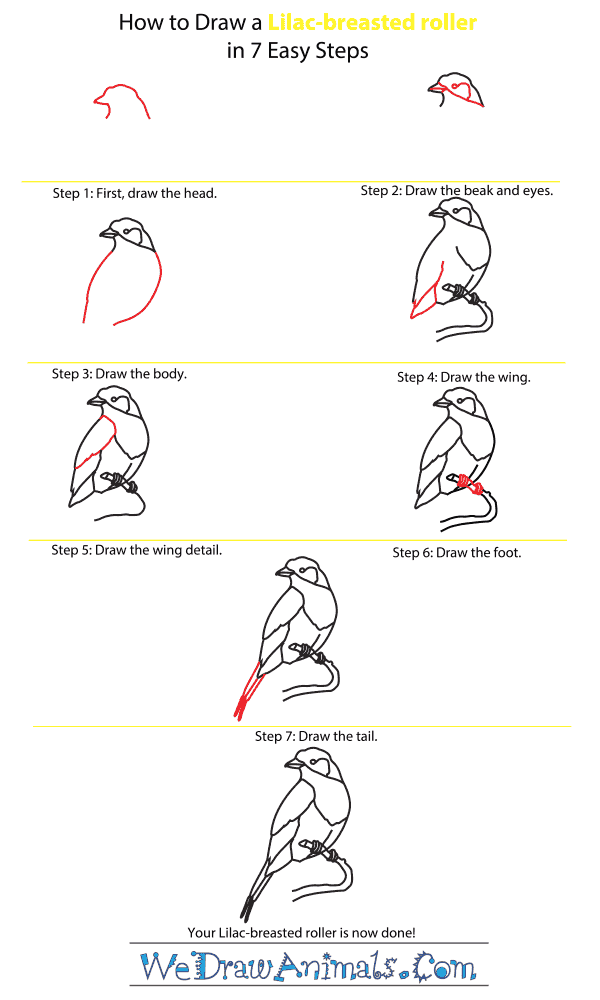In this quick tutorial you'll learn how to draw a Lilac Breasted Roller in 7 easy steps - great for kids and novice artists.
The images above represent how your finished drawing is going to look and the steps involved.
Below are the individual steps - you can click on each one for a High Resolution printable PDF version.
At the bottom you can read some interesting facts about the Lilac Breasted Roller.
Make sure you also check out any of the hundreds of drawing tutorials grouped by category.
How to Draw a Lilac Breasted Roller - Step-by-Step Tutorial
Step 1: Begin drawing the lillac-breasted roller by making a dome shape for the head. Add the beak as well!
Step 2: Add a line along the beak for the mouth and the face patterns! Make a tiny circle for the eye.
Step 3: Draw two curved lines to either side of the head for the back and the belly.
Step 4: Now add a slanted triangle shape for the wing and add a line that travels back up the body.
Step 5: Add some more detail to the wing. These birds are usually beautifully colored with blues, greens, pinks, and yellows! Remember this when you go to color it in!
Step 6: Looking good, now add the branch that our roller is perched on and add a few lines for the feet.
Step 7: Finally draw a long tail pointing away from the bird.
Interesting Facts about the LILAC-BREASTED ROLLER
The Lilac-Breasted Roller is a member of the bird family and the scientific term for them is Coracias caudata. They are widely dispersed along parts of the Saharan Desert in Africa and the southern portion of the Arabian Peninsula. This species prefers open wooded areas and desert type terrain but it needs trees or other tall structures in which to perch. The feathers are blue with red blotches on the face and back.
Did you know?
- The animal is the national bird of Botswana.
- This species lays a minimum of 2 eggs.
- They are the national bird of Kenya.
- They have a maximum of 4 eggs.
- They can scare away raptors and other large birds.
It needs this type of structure so that it can have a wide view for increasing its ability to notice insects from a distance. Other popular food sources are lizards, scorpions, snails, rodents, and other birds. During mating season, males have elaborate and creative flight and vocal patterns. Their nesting habits occur in natural holes of trees, where both parents take turns protecting the eggs. They can become vicious to secure their home during the raising of their young.








